NYC’s Forgotten ‘War on Christmas Trees’
Discover how an obscure holiday crackdown affects festive street vendors today!


20 Exchange is one of the lesser-known Art Deco-era skyscrapers in New York City’s Financial District but made a big splash when it first opened in 1931 as the fourth tallest building in the city. It also held the distinction of being the very tallest building in New York City with a stone facade. It was built on a plot of land that you can find on the earliest known map of New Amsterdam, the Castello plan.
Built as the headquarters for City Bank-Farmers Trust, 20 Exchange has interiors that are truly stunning and are still preserved today. Most of the building was converted into residential in the mid-2000s, allowing the public to see the opulent lobby again, but there are plenty of places still off-limits to the public. We recently took a tour with building management to get some of the secrets and fun facts about 20 Exchange. Here are ten of our favorites:
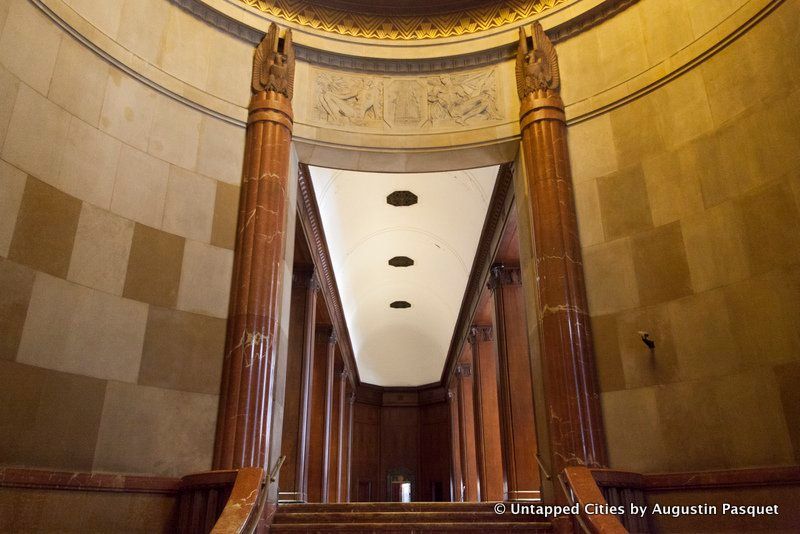
Rotunda of the Banking Hall
20 Exchange Place was built in 1931 as the City Bank-Farmers Trust building, and was a banking hall and office building until its residential conversion in the 2000s. The interior lobby has been mostly vacant since the conversion – including the 30-foot-high rotunda and former executive offices. Its main function during this time has been as a movie set – most famously as the interior of the bank under siege in Spike Lee’s Inside Man. You can also see 20 Exchange in films like the original Wall Street, The Amazing Spider Man 2, and numerous television shows.
See more photographs of the stunning banking hall and vaults here.
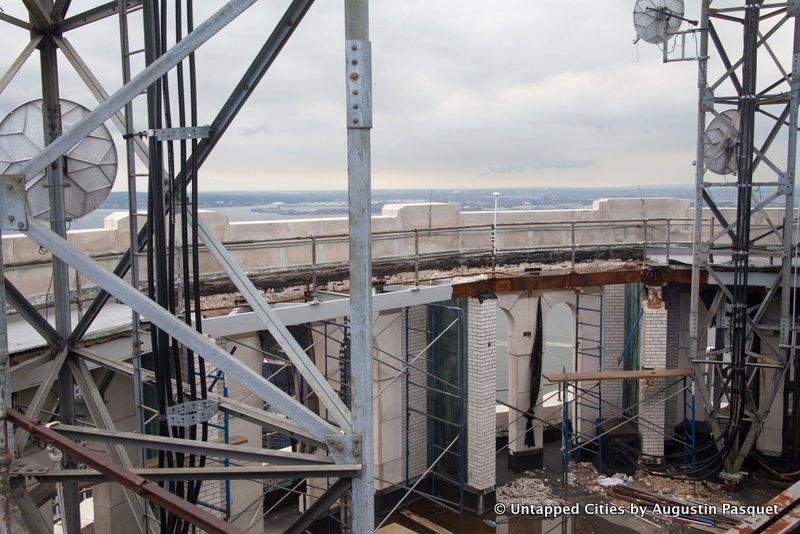
According to the book Skycraper Rivals by Daniel Abramson and Carol Willis of the Skyscraper Museum, the building’s plans featured an observation deck on the 57th floor. If it did, it was closed not too long after. The building isn’t listed as having a deck in 1939’s “WPA guide,” unlike neighboring 40 Wall Street, 70 Pine Street, and the Woolworth Building.
There’s nothing to suggest that there was ever an observation deck on the roof. Despite the nice arches, the roof is filled mostly with massive equipment that isn’t going anywhere anytime soon.
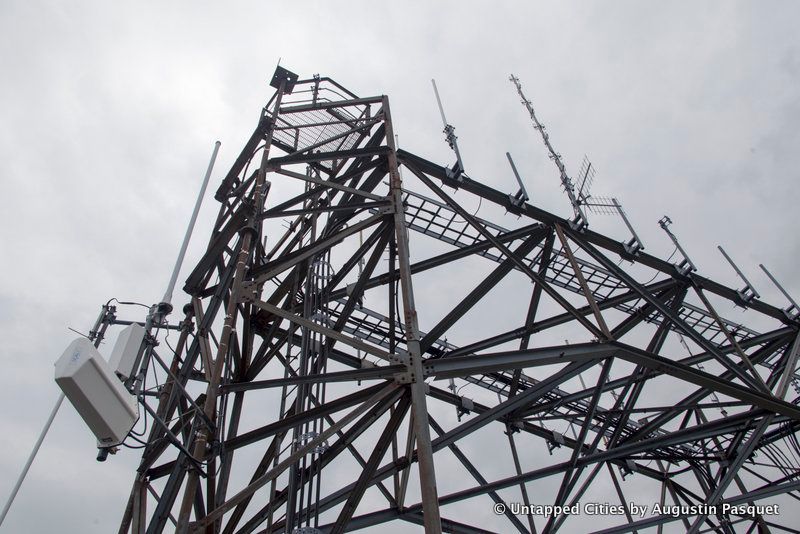
20 Exchange is notable on the skyline for the out-of-place metal scaffolding on the roof. It was built to house antenna towers – but while the building at one time has dozens of clients, today it’s down to just two – the NYPD and one private client. But it’s still pretty fun to climb. The antenna towers share the roof with cooling equipment.
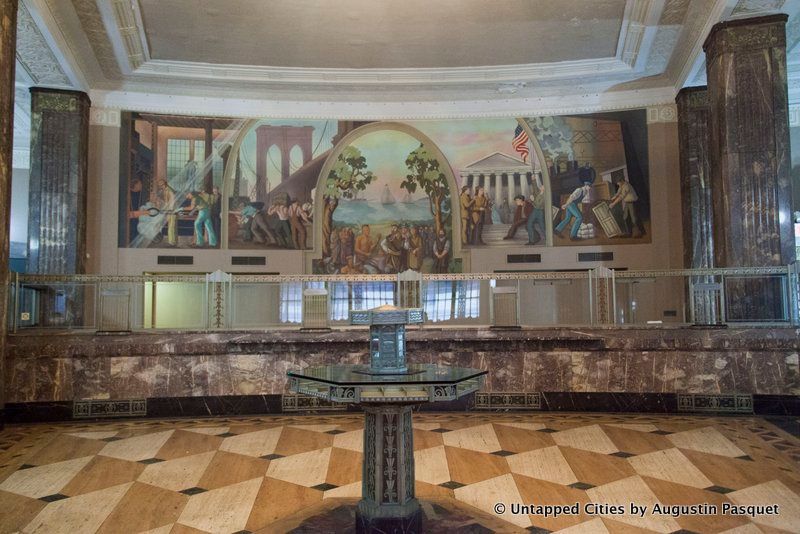
WPA Mural inside the Banking Hall
Carved into the outside of the building are sculptures of historical coins from the 11 different countries that the City Bank-Farmers Trust had branches in, and set into the ornate metal doors are panels depicting transportation – everything from trains, to steamships, to hot air balloons. Inside, there are WPA murals illustrating the history of New York, and also more metalwork doors – one featuring a sculpture of the building itself.
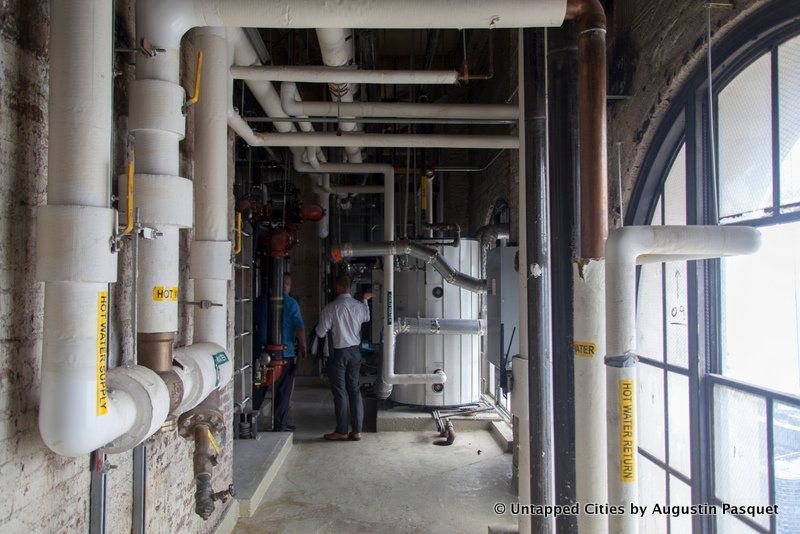
Mechanical floor of 20 Exchange
The building has 57 floor occupied floors. But despite having 27 separate elevators, they only serve up to the 56th floor. In order to get to the top floor, residents have to head into the stairwell and walk up the last flight. But that’s only the highest occupied floor. On top of that are the mechanical floors, (which hold 21 separate boilers), and the roof.
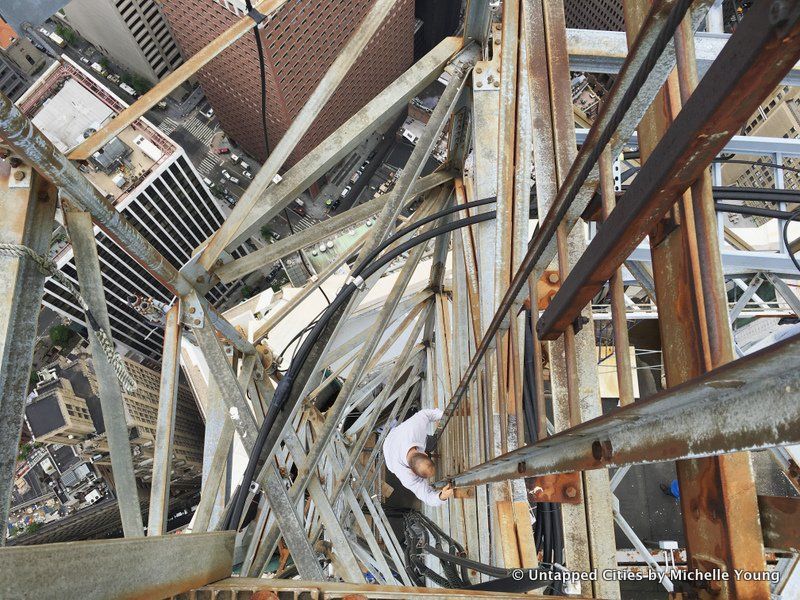
We had permission, but don’t do this on your own.
We got to the roof just by asking. But urban explorers have come from around the world to try and get to the top. If you’re thinking about trying it now though, you might want to think twice. Building management was clear that they’ve figured out all the tricks – catching (and arresting) five people who came on the roof just a week before we visited.
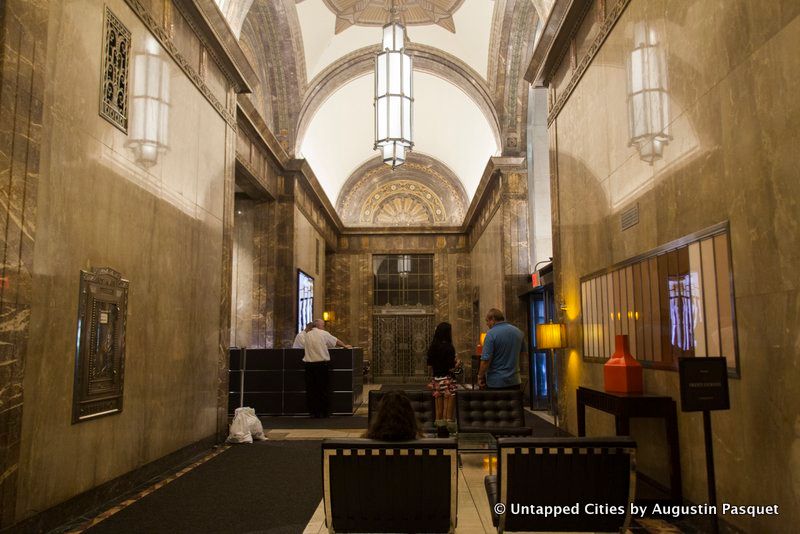
Anna Chapman was living in the building when she was arrested for acting as an “unregistered agent of a foreign government” – aka “spy” – in 2010. She was later deported to Russia as part of a prisoner exchange, where she became a columnist and TV host – and in 2014 allegedly tried to seduce Edward Snowden.
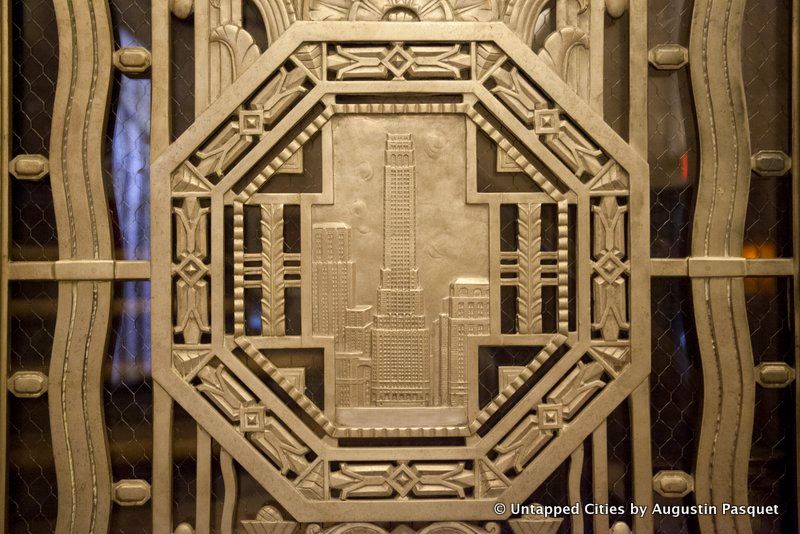
According to the New York Times, its February 24th, 1931 opening saw “an hourly average of 3,851 guests… during business hours.” At an 8-hour day, that’s over 30,000 people at the opening. To put that in perspective, the Empire State Building sees about 10,000 visitors in a typical day.
To give an additional sense of the importance of 20 Exchange, some of the lobby doors feature miniature versions of the skyscraper (as above).
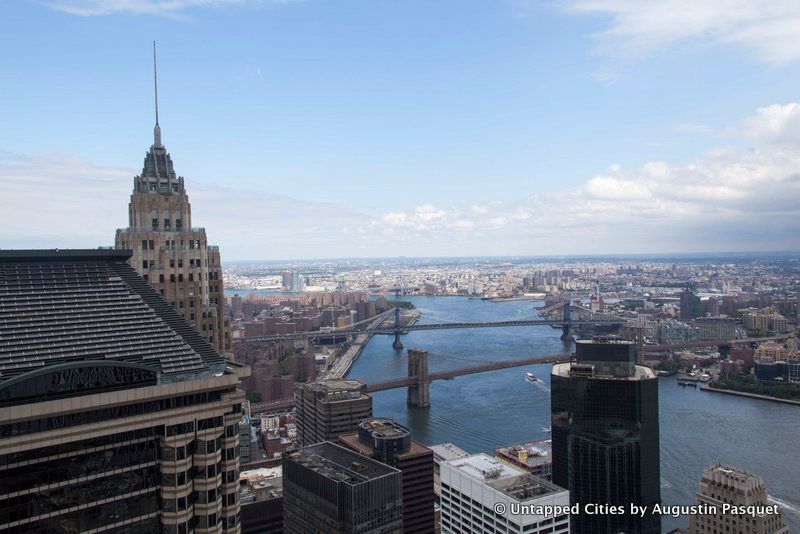
View from rooftop of 20 Exchange Place, 70 Pine on the left
When the building opened, the 15th floor was given over to 40 telephone operators whose job was to handle over 100,000 calls daily from around the world- necessary at the time for a banking operation that had offices in 11 countries.

The former offices and banking halls on the ground floor are currently empty, but still beautiful. In one wood-paneled room, two doors on either side of a short section of panelling lead to two separate rooms. But the nondescript section between them is actually a concealed door leading to a third room.
Many of the rooms in the banking hall have marble fire places, wood paneling with neoclassical details, and chandeliers. The book Wall Street: Financial Capital shows an image of an upper floor executive dining room explaining that the decor was intended to “remind its executives of an English manor house.”
Next, read about the Secrets of neighboring Art Deco Skyscraper 70 Pine.
Subscribe to our newsletter